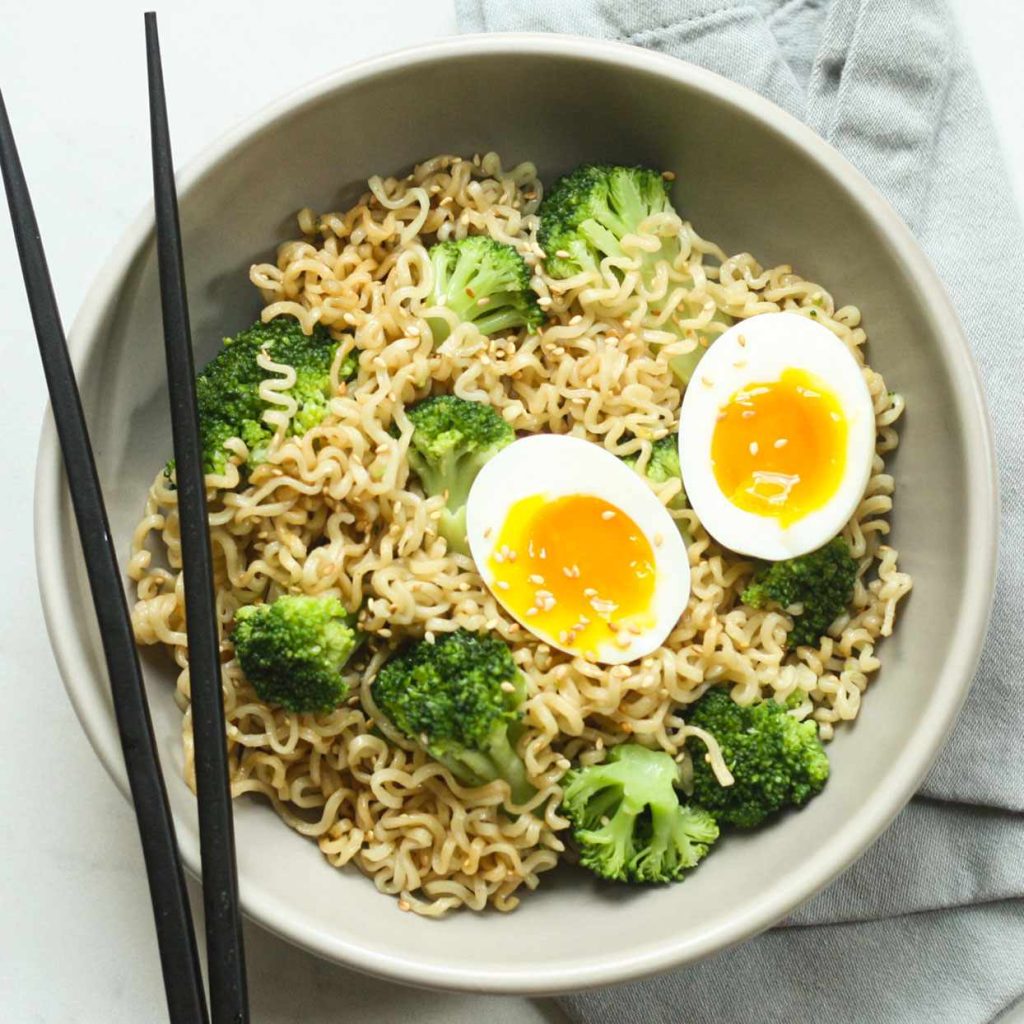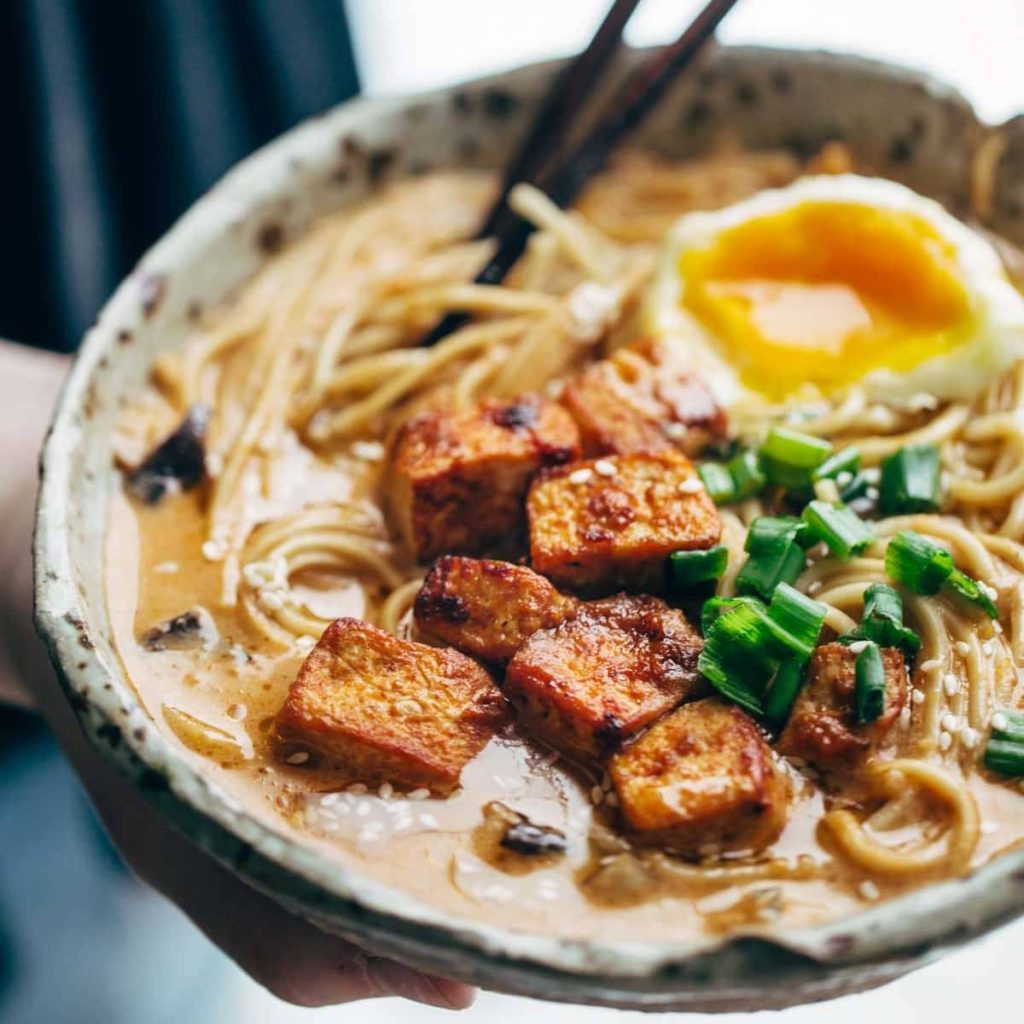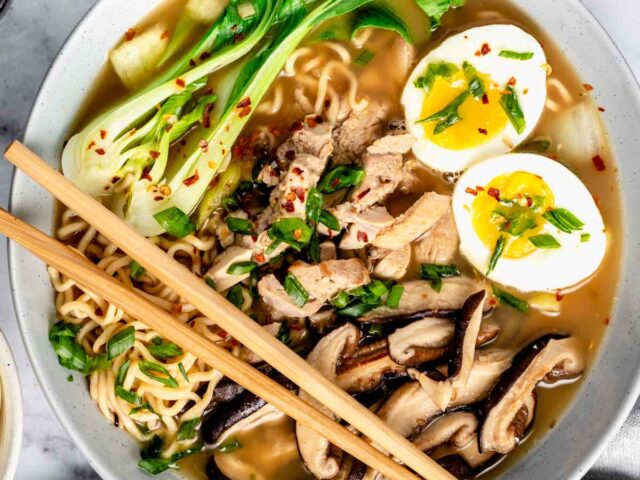Welcome to the world of Japanese culinary indulgence with our enticing recipe for Japanese Miso Ramen with Boiled Eggs. This delightful dish combines the rich umami flavors of miso broth with the creamy goodness of boiled eggs, creating a symphony of taste and texture that will transport you to the streets of Japan.
Miso ramen is a popular variation of traditional ramen, known for its robust and savory broth made with fermented soybean paste. It offers a unique depth of flavor that is complemented perfectly by the addition of boiled eggs. These eggs, cooked to perfection with soft and velvety centers, add a luxurious and creamy element to the dish.
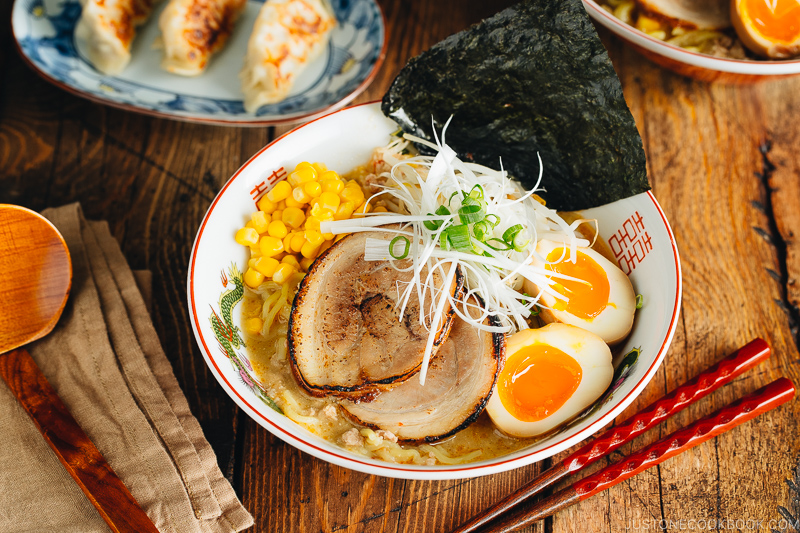
Japanese Miso Ramen with Boiled Eggs Recipe
Ingredients
Equipment
Method
- Boil the eggs.
- Make sure to boil the eggs for ten minutes only.
- Take a large pan.
- Add the butter and let it meltdown.
- Add in the miso paste.
- Mix all the ingredients well.
- Add the chopped garlic.
- Add in the rest of the ingredients in the end.
- Scramble the mixture.
- Add in the salt and pepper.
- Boil the ramen noodles according to the instructions on the pack.
- Drain the noodles and add them into the pan.
- Mix all the ingredients well and then dish them out.
- Peel the eggs and place them on the ramen.
- Garnish the fresh chopped chives on top.
- Your dish is ready to be served.
Video
Notes
FAQs
Q1: Can I use different types of miso paste for this recipe?
A: Absolutely! Miso paste comes in various varieties, such as white miso, red miso, and mixed miso. Each type has its own unique flavor profile. You can experiment with different types of miso paste to find the one that suits your taste preferences. White miso generally has a milder and sweeter flavor, while red miso is richer and more robust. Mixed miso combines the best of both worlds. Feel free to explore and choose the miso paste that appeals to you.
Q2: How long should I boil the eggs to achieve the desired consistency?
A: For soft-boiled eggs with a creamy yolk, you should cook them for approximately 6-7 minutes. However, the exact cooking time may vary depending on the size of the eggs and your desired level of doneness. It’s best to keep a close eye on the eggs while they boil and adjust the cooking time accordingly. Remember to transfer the eggs to an ice bath immediately after boiling to stop the cooking process and achieve the desired texture.
Q3: Can I make the miso broth in advance?
A: Yes, you can prepare the miso broth in advance. Once it’s cooled down, store it in an airtight container in the refrigerator for up to a few days. When you’re ready to serve the ramen, gently reheat the broth on the stovetop until it’s hot but not boiling. Stir well to ensure the miso paste is fully incorporated before adding it to your ramen bowls.

Q4: Can I add other ingredients to the ramen, apart from the boiled eggs?
A: Absolutely! Ramen is a versatile dish that welcomes various toppings and additions. You can customize your Miso Ramen with Boiled Eggs by adding ingredients such as sliced bamboo shoots, bean sprouts, corn, nori seaweed, sliced green onions, or even slices of marinated pork. Feel free to get creative and tailor the ramen to your preferences. Experiment with different textures and flavors to enhance your ramen experience.
Q5: Can I make this recipe vegetarian or vegan?
A: Yes, you can adapt this recipe to suit a vegetarian or vegan diet. Simply use vegetable-based broth instead of meat-based broth and omit any animal products like meat or seafood. You can also explore plant-based alternatives for the boiled eggs, such as tofu or vegan egg substitutes. Be sure to check the ingredients of your miso paste to ensure it’s vegetarian or vegan-friendly. Customize the toppings with a variety of vegetables and plant-based proteins to create a delicious vegetarian or vegan Miso Ramen with Boiled Eggs.
Q6: Can I adjust the spiciness of the miso broth?
A: Certainly! If you prefer a spicier miso broth, you can add ingredients like chili paste, chili oil, or hot sauce to your taste. Start with a small amount and gradually increase it until you achieve your desired level of spiciness. Adjusting the spiciness allows you to personalize the dish according to your preferences.
Q7: Can I use store-bought ramen noodles for this recipe?
A: While store-bought ramen noodles can be convenient, for an authentic experience, it’s recommended to use fresh ramen noodles if available. Fresh ramen noodles have a superior texture and flavor compared to instant ramen noodles. However, if fresh noodles are not accessible, you can use high-quality packaged ramen noodles and discard the seasoning packet. Cooking the noodles separately and adding them to the miso broth will still result in a delicious bowl of Miso Ramen with Boiled Eggs.
Cooking tips
1. Use quality ingredients: For the best results, use high-quality miso paste, fresh ramen noodles, and farm-fresh eggs. The quality of ingredients will greatly impact the flavor and overall experience of your dish.
2. Taste and adjust: Throughout the cooking process, taste the miso broth and make any necessary adjustments. You can add more miso paste for a stronger flavor, soy sauce for saltiness, or a touch of sweetness with mirin. Adjust the seasoning to suit your preferences.
3. Cook the noodles al dente: Cook the ramen noodles according to the package instructions, but make sure to keep them slightly firm (al dente) as they will continue to cook slightly when added to the hot broth. Overcooking the noodles can result in a mushy texture.
4. Keep the eggs at room temperature: Before boiling the eggs, it’s recommended to bring them to room temperature. This helps prevent cracking during the cooking process and ensures more even cooking.
5. Peel the eggs carefully: Once the boiled eggs are cooked and cooled, gently tap them on a hard surface to create cracks and facilitate easier peeling. Start peeling from the wider end where the air pocket is located, as it tends to be easier to peel from that end.

6. Garnish with finesse: When assembling the ramen bowls, take care in arranging the toppings. Slice the boiled eggs neatly, chop the green onions finely, and arrange the other garnishes thoughtfully. A visually appealing presentation adds to the enjoyment of the dish.
7. Customize your toppings: While boiled eggs are a classic topping for Japanese ramen, feel free to experiment with additional toppings such as sliced bamboo shoots, nori seaweed, or pickled vegetables. Adding a variety of textures and flavors can elevate your ramen experience.
8. Serve immediately: Ramen is best enjoyed when served immediately after assembly. This ensures the noodles are still warm and the flavors are at their peak. Delaying consumption may result in the noodles becoming soggy and the overall dish losing its optimal taste and texture.
9. Make extra broth: If you anticipate leftovers or want to enjoy another round of ramen later, consider making extra miso broth. Store the broth separately and reheat it when needed. This allows you to enjoy freshly cooked noodles and toppings with hot miso broth.
10. Have fun and experiment: Cooking is a creative process, so don’t be afraid to experiment with flavors and techniques. Feel free to add your own twist to the recipe by incorporating additional ingredients or spices that you enjoy. Cooking is about exploring and finding what works best for your palate.
Remember, these tips are meant to enhance your cooking experience and encourage you to make the recipe your own. Enjoy the process and savor the delicious outcome of your efforts.
Serving suggestions
1. Traditional Style: Serve the Japanese Miso Ramen with Boiled Eggs in traditional ramen bowls. Place a portion of cooked ramen noodles in each bowl, ladle the hot miso broth over the noodles, and top it off with a sliced boiled egg. Garnish with chopped green onions, nori seaweed, and a sprinkle of sesame seeds for an authentic presentation.
2. DIY Ramen Bar: Create a fun and interactive dining experience by setting up a DIY ramen bar. Display a variety of toppings such as sliced boiled eggs, bean sprouts, bamboo shoots, corn, and sliced green onions. Allow each person to customize their ramen bowl with their preferred toppings, creating a personalized ramen masterpiece.
3. Ramen Salad: Transform the Japanese Miso Ramen with Boiled Eggs into a refreshing salad. Toss cooked and cooled ramen noodles with a light vinaigrette dressing, mixed greens, and a variety of fresh vegetables. Top it off with sliced boiled eggs for a protein-rich and satisfying salad option.
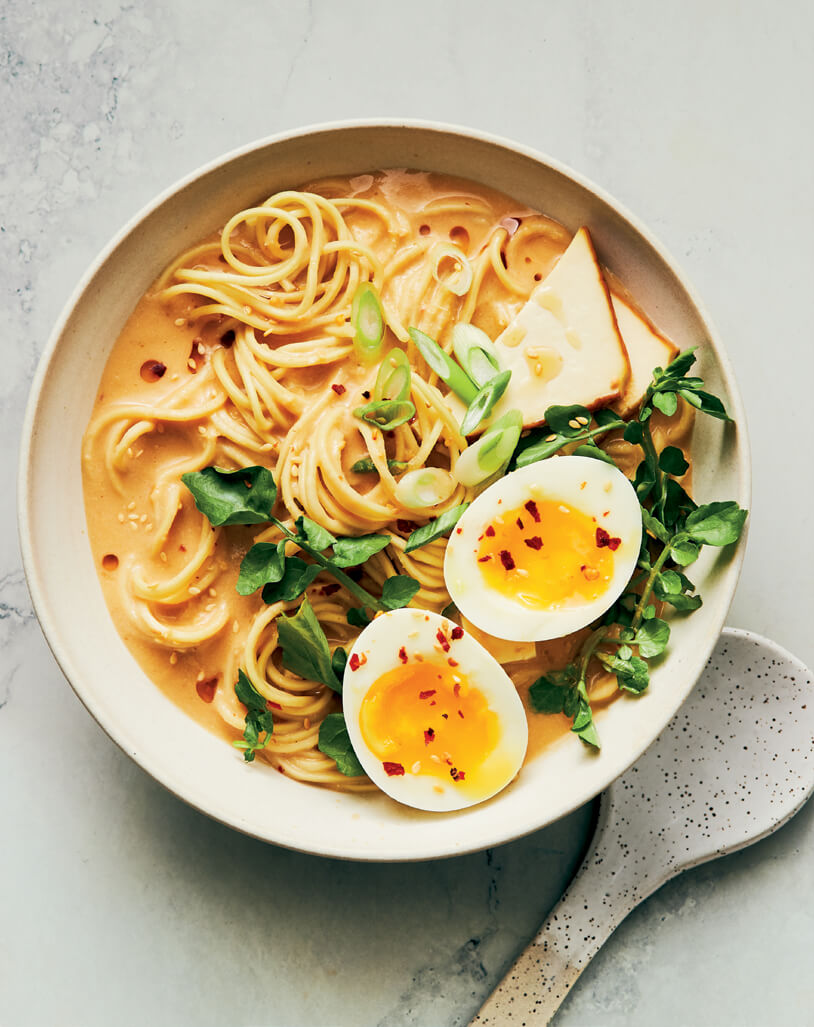
4. Bento Box: Pack the Japanese Miso Ramen with Boiled Eggs into a bento box for a portable and convenient meal. Place the cooked ramen noodles and sliced boiled eggs in one compartment, and the miso broth in a separate container. When ready to eat, pour the hot broth over the noodles and enjoy a delicious meal on the go.
5. Ramen Soup Dumplings: Get creative and use the Japanese Miso Ramen with Boiled Eggs as a filling for soup dumplings. Wrap the boiled eggs in a thin layer of dumpling dough, steam them, and serve them as flavorful ramen-filled dumplings. This unique twist combines the beloved flavors of ramen and dumplings in one delightful bite.
6. Ramen Stir-Fry: Turn the Japanese Miso Ramen with Boiled Eggs into a stir-fry dish by stir-frying the cooked ramen noodles with your favorite vegetables and protein. Add the miso broth as a flavorful sauce, and top it off with sliced boiled eggs for added creaminess. This quick and easy stir-fry variation offers a different way to enjoy the flavors of ramen.
Remember, these serving suggestions are just a starting point. Feel free to get creative and adapt the recipe to your preferences. Ramen is versatile, and you can customize it to suit your taste and presentation preferences.




